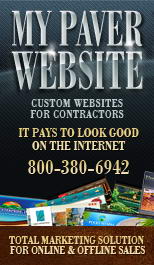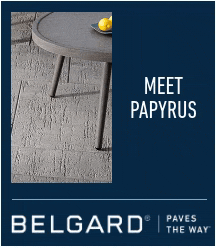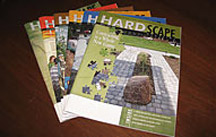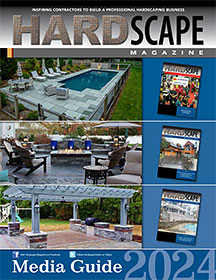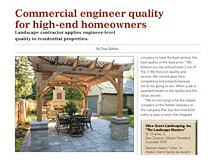Articles written by guest contributors

Weston Zimmerman
Are your rates too high?
By Weston Zimmerman“I went down the rabbit hole of figuring out my numbers, and I found the hourly rate that I need to charge to cover all of my overhead expenses and be profitable. Now I’m concerned. I’m afraid what my calculations are pricing me right out of the market.
“What happens if my rates are more than the market can bear?”
I got this question on a webinar I did a while ago. And it’s a common one.
Often we are charging ahead, just focusing on getting the work done. And sticking to our good ol’ trusty hourly rate we’ve been able to sell work at. But when uncertainty, lack of confidence, and lack of cash in the bank creeps up on us, we finally sit down to run some calculations again and try to unearth the truth about what we really need to be charging.
And… the result can scare us a little. “Am I going to be able to sell work at that rate!? I’m already more expensive than my competition!”
That right there is the problem I want to work at solving in this article while also identifying some common traps and pitfalls we might fall in to that sabotage our profitability in the process.
Ways to solve the problem
When you don’t like the results of your calculations, you essentially have 2 choices: Cut overhead expenses, or get more work done. Basically you can cut bills, or increase billings.Lowering overhead expensesLowering overhead expenses can seem simple enough, but a word of caution. Don’t cut off the hand that is feeding you. You still need your truck to get to the jobsite. You still need your marketing to feed you leads to sell work to.
But beyond those obvious things to not cut, there are often areas of waste where you can cut or get more efficient. Just the sheer act of sitting down and scrutinizing what those things are can produce savings.
Add production labor
It might seem counterintuitive, but when you hire more labor to produce jobs, you get more work done. You increase billings. And, here is the cool part, your overhead is now spread across more people, meaning your dollars for overhead per man-hour go down, bringing your overall labor rate down.
Increase efficiency
There is a lot of fruit on the vine of this one. At Tussey Landscaping we made double digit increases in our net profit by focusing on efficiency relentlessly. Things such as getting fuel right at your shop, finding ways to be more efficient with your logistics of getting materials to the jobsite, etc.
Essentially you look at your whole operation and you ask yourself: How can I have my skilled labor on the jobsite as much time as possible? Sure you might “save” yourself a delivery fee by running to go get the materials yourself, but it costs you not only the labor and truck to go get it, but the person in the truck is not progressing the job completion by being off-site.
The opportunity cost is far more valuable. Keep your skilled labor on site. Find other ways or other people to do everything else.
Add value – Do the things your competitors are not willing to do
Have a brainstorming session on this one with your team. What can you do to elevate your client’s experience from the moment they reach out to you. Everything in this pursuit should be designed through the lens of making it easier and more enjoyable to do business with you.
It can take time to realize the effect of making investments in this way. But, once you do, it comes in the form of reputation. And reputation is powerful.
- Have a professional power washer clean their driveway after your job is done.
- Give them gift certificates to an auto detailer to clean their cars after you are done making all the dust.
- Create an incredible introduction to your company in your sales process.
- Professionally introduce your crew upon job kickoff.
Common pitfalls
The battle of what you should be charging begins in cold hard calculations, but often ends in an emotional battle within. And there are some traps:1. Focusing on the price instead of value
Remember, there are more ways to win a deal than being the cheapest. In fact, being the cheapest can lose you the deal. If price was the only thing that closed a deal, then Lambo would never sell a car.
Don’t even try to be the cheapest. Instead, try to be the best value. The best thing you can do to win the deal is to be the first proposal back to the client. Focus on speed with templates and production rates to produce your proposals.
2. Charging the lower rate anyway
If you charge the lower rate anyway regardless what your calculations tell you… Yes, you have the hit of the down payment and you get the job. But you just signed yourself up for cashflow pain in a few weeks or months. It’s not worth it. It doesn’t matter what you tell yourself, you can’t win by caving.
3. Cutting hours in the estimate to lower the price
This one is a lot like just charging the lower rate anyway. It’s just that instead of lowering the price, you do things like reduce the quantity of man-hours, materials or equipment in the bid, to bring the price down.
Then the job takes what you thought it would take anyway, and you realize you were just kidding yourself the whole time. Don’t fall prey. Instead, focus on adjusting scope of work to bring the price down, not just trying to fiddle with the price by itself.
If someone tells you, “I have another proposal from your competitor and they are 20% less.” My favorite comeback is, “Hmmm interesting… I’m curious, why haven’t you hired them yet?” And then shut up.
If you need to quickly check your hourly rate, and see how much you could move the needle by adding production labor or cutting overhead expenses, use our free hourly rate calculator at SynkedUp.com/man-hour-price-calculator/
For help with your company, email Weston@SynkedUP.com, follow on IG at @synkedup, call (814) 383-1901 or visit SynkedUP.com. Weston Zimmerman is CEO & co-founder of SynkedUP project management software and app. SynkedUP helps contractors know and track their numbers, estimate and job-cost jobs, and manage their jobs efficiently. Check out his podcast "The Cost of Doing Business."






